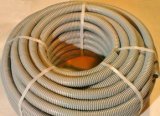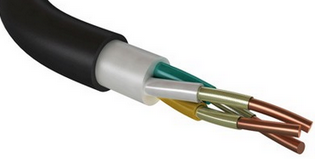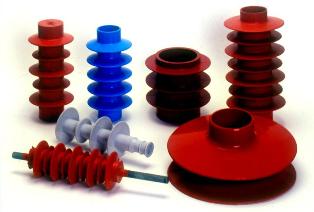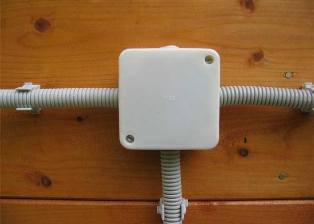Aging of polymeric materials
 Polymeric materials are widely used in industry in the form of coatings and whole parts. They refer to solid electrical insulating materials… Many varieties of polymers have been developed, but they all suffer from undesirable aging processes that degrade their durability, appearance and strength. Aging changes the structure and chemical composition of polymeric materials.
Polymeric materials are widely used in industry in the form of coatings and whole parts. They refer to solid electrical insulating materials… Many varieties of polymers have been developed, but they all suffer from undesirable aging processes that degrade their durability, appearance and strength. Aging changes the structure and chemical composition of polymeric materials.
Aging of polymers can occur as a result of various factors:
-
light (ultraviolet radiation);
-
air (ozone and oxygen);
-
temperature (high or low, as well as its differences);
-
moisture;
-
mechanical loads (wear, compression and tension, medium pressure);
-
exposure to aggressive environments (acids and bases);
-
exposure to microorganisms;
-
from the influence of several of the above factors.
Polymers are high molecular weight compounds and the mechanism of their aging is mainly due to the process of destruction of macromolecular chains.

There are two types of destruction - chaotic and chain.In the case of random destruction, the rupture of macromolecules and the formation of stable compounds of reduced molecular weight occurs according to a random law. According to this mechanism, the chemical destruction of polymers is due to the action of acids, bases and reagents.
The destruction of the chain leads to several acts of disintegration of the molecules according to certain processes, such mechanism of polymer aging is usually triggered by the influence of high energy (temperature, light and radiation).
The study of the problem of aging of polymers is complicated by the fact that their nature and structure are different, respectively, the processes of destruction of molecular chains are different. There are also no methods for multifactorial accounting of environmental conditions leading to aging.

As criteria characterizing the resistance of polymer materials to aging, the concepts of operation (preservation of polymer properties that guarantee the serviceability of the product) and the period of preservation of operational properties are used.
There are 3 methods to protect polymers from aging:
1) active protection,
2) passive protection,
3) combined.
Active protection of polymers means reducing the impact of aging factors. Passive methods include various ways to increase the stability of polymers using stabilizer additives, free radical scavengers, scavengers of active aging products, light stabilizers, antioxidants, antiozonants, flame retardants, antiradicals, antiradiation agents under mechanical stress, inhibitors of corrosion and biocides with stabilization Properties.Also, protective coatings are used, which are more resistant to aging than the basic polymer material.
The simplest light stabilizers of polymers are iron oxide (content up to 1%), carbon black, phthalocyanine (up to 0.1%) and nickel complex compounds.
Antioxidant stabilizers are of two types: preventing the decomposition of hydroperoxides and breaking the chain of oxidative chemical reactions.
Among the antioxidants that stop the destruction, antioxidants of the phenolic and amine type can be isolated, as well as mercaptans, sulfides and thiophosphates. The introduction of both types of antioxidants into the polymer enhances the anti-aging effect.
Usually, producers of polymer materials also produce various types of stabilizers. The following materials can be distinguished from foreign producers of raw materials: Arkema, France (Thermolite), Baerlocher, Germany (stabilizers based on CaZn, Pb, CaOrg, Sn, BaZn), Chemtura, USA (flame retardant HBCD, Firemaster, PVC stabilizers Mark, Lowilite, inhibitors Naugard 300-E, antioxidants Alkanox, Anox, Weston), Ciba, Switzerland (antioxidant IRGANOX, stabilizer IRGAFOS), PVC stabilizers of the German company Ika, etc.

